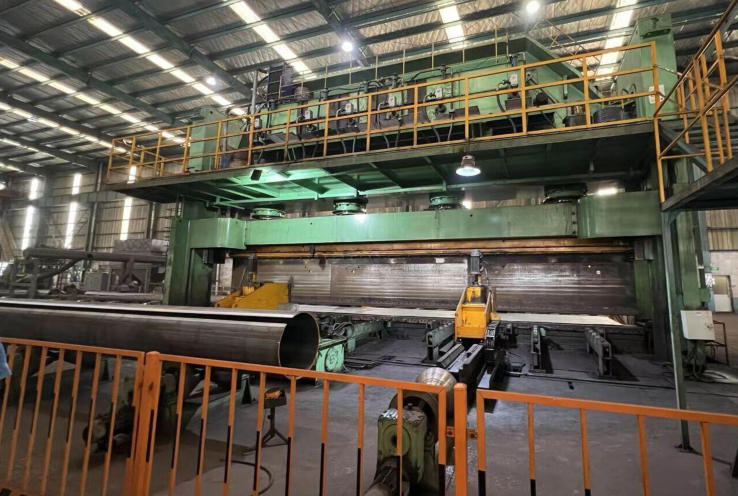
Welded Pipe Production Process
Welded pipe production process:
The production process of welded pipes usually includes three basic processes: forming, welding, and finishing: using hot-rolled or cold-rolled strips as raw materials, bending the strips into tubes with straight or spiral seams; using different heat sources to heat the seam edges, a weld with a certain strength is obtained by pressure welding or fusion welding; the finished pipe is then made into a finished pipe through processes such as sizing, cutting, straightening, heat treatment, hydrostatic testing and coating.

The production process of welded pipes is simple, the production efficiency is high, the varieties and specifications are many, and the equipment investment is low, but the general strength is lower than that of seamless pipes. Since the 1930s, with the rapid development of continuous rolling production of high-quality strip steel and the advancement of welding and inspection technology, the quality of welds has continued to improve, and the specifications and varieties of welded pipes have increased day by day, and have replaced non-woven pipes in more and more fields. Sew the tube. In industrially developed countries, the production of welded steel pipes accounts for 60 to 70% of the total steel pipe production. Currently, we can produce welded pipes with outer diameters from 3 to 4000mm and wall thicknesses from 0.1 to 200mm. Welded pipe production is classified according to heat source and forming method.
The production of small and medium diameter welded pipes mainly uses straight seam continuous electric welding and furnace welding.
Electrically welded pipe production (such as ERW welded pipe):
Furnace welded pipe production:
Large diameter welded pipe production:
Welded pipes with a diameter greater than 416mm are mainly produced by submerged arc welding under flux, and flash welding or high-frequency resistance welding are also used. According to the forming method, it can be divided into four types: spiral forming, roller forming, roller forming and press forming (U-O-E).
Spiral welded pipe (SSAW) production is to bend the plate and strip at a spiral angle, continuously forming and welding. The investment is low, the cost is low, and the weld stress is reasonable. Narrow strips can be used to produce larger diameter steel pipes, or the same width strips can be used to produce steel pipes of different diameters. In the 1970s, the left-hand forming double-sided welding method was used to improve the strength of the weld. The pressure used in the press forming method has reached more than 50,000 tons of force, and can produce welded pipes with a maximum diameter of 1626mm. This method has high output, good quality, and stable operation, but the equipment is bulky. After press forming and roller forming and welding, mechanical or hydraulic pipe expansion can be used to improve the accuracy and mechanical properties of the steel pipe.
Development of welded pipe production:
The development of welded pipe production depends on the ability to provide low-cost, high-quality, and sufficient quantities of plates and strips to ensure the reliability and stability of weld quality. The main development trends of welded pipe production technology are to ensure the quality of raw materials, improve the forming method and welding range, increase heat treatment, and widely adopt non-destructive testing and inspection technology as well as surface coatings. Since the 1970s, the welding of various non-ferrous metal pipes has also made great progress. For example, the welding method is used to produce titanium pipes, which has low cost and rapid development.
Go here to learn more about "Which is Better Seamless or Welded Pipe?"
- 【Prev】 : Oil Casing & Tubing Pressure Rating
- 【Next】 : Seamless Black Steel Pipe Schedule 40


